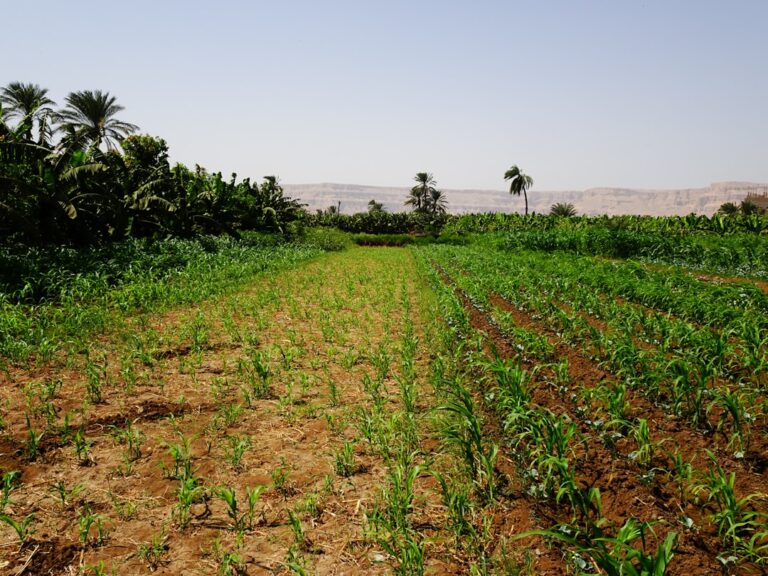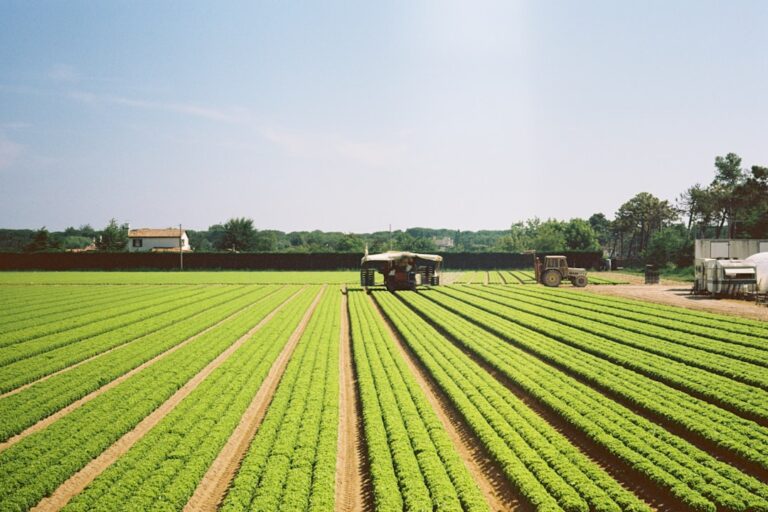Peasant resistance in India has deep historical roots, tracing back to the agrarian structures established during various empires and colonial rule. The earliest forms of resistance can be observed during the Mughal period, where local farmers often revolted against oppressive taxation and land revenue systems imposed by the central authority. The most notable of these uprisings was the revolt led by the Bundela Rajputs in the late 17th century, which highlighted the discontent among agrarian communities.
However, it was during British colonial rule that peasant resistance gained significant momentum, as the colonial administration implemented exploitative land revenue systems like the Permanent Settlement of 1793 in Bengal, which severely disadvantaged farmers. This system not only increased the burden of taxation but also led to widespread dispossession of land, igniting a series of revolts across the subcontinent. The 19th and early 20th centuries saw a surge in organized peasant movements, driven by a combination of economic hardship and growing political consciousness.
The Deccan Riots of 1875, for instance, were a direct response to the oppressive practices of moneylenders and landlords, showcasing the desperation of farmers who were trapped in a cycle of debt. Similarly, the Kisan Sabha movement in the 1920s and 1930s emerged as a significant force advocating for agrarian rights and social justice. These movements were not merely reactions to economic exploitation; they were also intertwined with the broader struggle for independence from colonial rule.
Leaders like Mahatma Gandhi recognized the importance of mobilizing peasants as a crucial component of the national movement, emphasizing their role in challenging both colonial oppression and feudal structures.
Key Takeaways
- Peasant resistance in India has a long historical context, dating back to colonial times and continuing through various social and economic changes.
- Economic exploitation and land rights are central issues driving peasant resistance, as many communities face displacement and loss of livelihood due to industrial and infrastructure projects.
- Government policies often have a negative impact on peasant communities, as they prioritize industrial and urban development over the rights and needs of rural populations.
- Caste and gender play a significant role in peasant resistance, as marginalized groups often face the brunt of exploitation and discrimination.
- Globalization has had a profound impact on peasant livelihoods, as it has led to increased competition, loss of traditional markets, and environmental degradation.
- Strategies and tactics of peasant resistance include protests, land occupations, legal battles, and alliances with other social movements to amplify their voices and demands.
Economic exploitation and land rights
Economic exploitation has been a persistent theme in the history of peasant struggles in India. The agrarian economy has often been characterized by a complex web of relationships involving landlords, moneylenders, and state authorities, which has systematically marginalized the peasantry. Land rights have been at the core of these struggles, as access to land is intrinsically linked to livelihood security and social status.
The zamindari system, prevalent during British rule, exemplified this exploitation, where landlords were given control over vast tracts of land while peasants worked as tenants with little to no rights. This system not only entrenched economic disparities but also fostered a culture of dependency and subjugation among farmers. In contemporary India, issues surrounding land rights continue to be contentious.
The Land Acquisition Act of 2013 aimed to provide fair compensation for land acquired for development projects; however, its implementation has often been marred by bureaucratic inefficiencies and corruption. Farmers have frequently found themselves displaced without adequate compensation or rehabilitation, leading to protests and resistance movements across various states. For instance, the ongoing agitation against land acquisition for industrial projects in regions like Punjab and Haryana reflects a broader struggle for land rights that resonates with historical grievances.
The fight for land is not merely an economic issue; it is also a matter of identity and dignity for many peasant communities who view their connection to the land as integral to their cultural heritage.
Impact of government policies on peasant communities

Government policies have played a pivotal role in shaping the landscape of peasant resistance in India. Post-independence, various agrarian reforms were introduced with the intention of alleviating poverty and empowering farmers. The abolition of zamindari systems aimed to redistribute land to landless laborers and small farmers; however, the actual implementation often fell short of expectations.
Corruption and bureaucratic hurdles frequently undermined these reforms, leaving many peasants disillusioned with state promises. The Green Revolution in the 1960s, while initially boosting agricultural productivity through high-yielding varieties and chemical fertilizers, also led to increased inequalities as wealthier farmers benefited disproportionately from these advancements. In recent years, government policies have increasingly favored corporate interests over smallholder farmers.
The introduction of the Farm Laws in 2020 sparked widespread protests across India, as many farmers feared that deregulation would lead to exploitation by large agribusinesses.
The protests that ensued were not just about specific policies; they represented a broader struggle against systemic neglect and marginalization of peasant communities.
The resilience displayed by farmers during these protests highlighted their collective agency and determination to assert their rights in the face of governmental indifference.
Role of caste and gender in peasant resistance
Caste and gender dynamics significantly influence peasant resistance movements in India, shaping both participation and leadership within these struggles. The caste system has historically dictated social hierarchies within rural communities, often relegating lower-caste individuals to positions of economic vulnerability and social exclusion. In many instances, upper-caste landlords have exploited lower-caste laborers, leading to tensions that manifest in various forms of resistance.
For example, movements like the Champaran Satyagraha in 1917 not only addressed agrarian grievances but also highlighted issues of caste discrimination faced by tenant farmers.
Women have been at the forefront of many agrarian movements, challenging both patriarchal norms and economic exploitation.
Their participation is often driven by the dual burden of agricultural work and domestic responsibilities, making them particularly vulnerable to economic policies that disregard their contributions. The Narmada Bachao Andolan (NBA), which opposed the construction of large dams on the Narmada River, saw significant involvement from women who articulated their struggles against displacement and loss of livelihood. These women not only fought for their rights but also redefined traditional gender roles within their communities, asserting their agency in both social and political spheres.
Influence of globalization on peasant livelihoods
Globalization has had profound implications for peasant livelihoods in India, reshaping agricultural practices and market dynamics. The liberalization policies introduced in the 1990s opened up Indian markets to global competition, leading to both opportunities and challenges for smallholder farmers. On one hand, globalization has facilitated access to new markets and technologies; on the other hand, it has intensified competition from multinational corporations that often prioritize profit over sustainability.
This has resulted in a precarious situation for many peasants who struggle to compete with large agribusinesses that benefit from economies of scale. The impact of globalization is particularly evident in the realm of cash crops versus food security. As farmers shift towards cultivating cash crops like cotton or soybeans for export markets, there is a growing concern about food sovereignty and self-sufficiency.
This shift can lead to increased vulnerability among peasant communities as they become more dependent on volatile global markets. The agrarian crisis that has unfolded over recent decades—characterized by rising debt levels and farmer suicides—can be partially attributed to these global economic pressures. Movements advocating for sustainable agriculture and local food systems have emerged as counter-narratives to globalization’s adverse effects, emphasizing the need for policies that prioritize smallholder farmers’ rights and livelihoods.
Strategies and tactics of peasant resistance

Peasant resistance in India has evolved over time, employing a diverse array of strategies and tactics to assert their rights and challenge oppression. Historically, direct action has been a hallmark of peasant movements, with protests, strikes, and land occupations serving as powerful tools for mobilization. The Kisan Sabha movement utilized mass rallies and demonstrations to galvanize support among farmers, while more recent movements have harnessed social media platforms to amplify their voices and organize protests on a national scale.
In addition to direct action, legal strategies have also played a crucial role in peasant resistance. Many organizations representing farmers have sought legal recourse to challenge unjust land acquisitions or exploitative practices by corporations. The use of public interest litigation (PIL) has become increasingly common as a means to hold governments accountable for failing to protect farmers’ rights.
Furthermore, alliances with civil society organizations and environmental groups have strengthened peasant movements by broadening their scope and impact. The resilience displayed by peasant communities is often rooted in their ability to adapt their strategies to changing political contexts. For instance, during the recent farmer protests against the Farm Laws, leaders employed a combination of traditional forms of protest alongside innovative tactics such as sit-ins at key highways and symbolic gestures like burning copies of the laws.
This adaptability reflects a deep understanding of both local grievances and broader socio-political dynamics, enabling peasants to navigate complex challenges while remaining steadfast in their pursuit of justice. In summary, peasant resistance in India is a multifaceted phenomenon shaped by historical legacies, economic exploitation, government policies, caste dynamics, globalization influences, and strategic adaptability. Each layer adds depth to understanding how rural communities continue to assert their rights amidst ongoing challenges.
If you are interested in exploring the core theories of Buddhism, you may find this article to be a fascinating read. Understanding concepts such as anatmavada, karma, rebirth, and nirvana can provide valuable insights into the roots of peasant resistance in India. Additionally, if you are looking to delve into the world of technology, you may want to check out this comprehensive guide on the technology life cycle. And for those aspiring to become a technology consultant, this essential guide can offer valuable tips and advice.
FAQs
What are the roots of peasant resistance in India?
The roots of peasant resistance in India can be traced back to historical injustices, exploitation by landlords and moneylenders, and the struggle for land rights and fair wages.
What are some historical factors contributing to peasant resistance in India?
Historical factors contributing to peasant resistance in India include the British colonial land policies, the Green Revolution’s impact on small-scale farmers, and the failure of land reforms to address landlessness and inequality.
What are some contemporary issues leading to peasant resistance in India?
Contemporary issues leading to peasant resistance in India include the corporatization of agriculture, the impact of neoliberal economic policies, and the struggle for land rights and fair compensation for land acquisition.
How do peasants in India resist these challenges?
Peasants in India resist these challenges through various forms of protest and resistance, including land occupations, demonstrations, strikes, and legal advocacy for their rights.
What are some notable examples of peasant resistance movements in India?
Notable examples of peasant resistance movements in India include the Naxalite movement, the Telangana Rebellion, and the recent protests against the new farm laws introduced by the Indian government.























+ There are no comments
Add yours